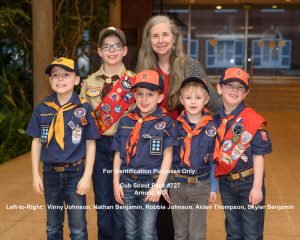+ By Brenda Wintrode + Photos by Gregg Patrick Boersma
“When people say, ‘I don’t have an artistic bone in my body,’ I will argue that strongly. Everyone has some creative bent, otherwise we would just be clones of each other,” says The Mitchell Gallery’s Lucinda Edinberg. As the museum’s art educator, Edinberg has been facilitating relationships between the general public and the art world since 2001. She collaborates with the preparator on the design and layout of exhibitions and installations and acts as tour guide, lecturer, and host for school groups that come to the gallery. “The artwork speaks for itself, and I hope that I’m just facilitating the appreciation with factoids and promotion of thoughts,” she says.
 Edinberg creates space not only for the exhibitions but also for visitors of all ages to share their varying opinions on what they see. Not all visitors to the recent exhibit of Robert Indiana’s iconic pop art were impressed, and some described it to Edinberg as “flippant.” Indiana’s most famous work has the letters in the word LOVE stacked two-by-two, forming a square. Rather than disagreeing with critics, she describes Indiana’s use of negative and positive space and his understanding of composition. “My job isn’t to convince people, but it is to give them a different point of view. I’m the first to say there are some exhibitions I like better than others, but if everyone liked the same thing, there would be a long line,” she explains.
Edinberg creates space not only for the exhibitions but also for visitors of all ages to share their varying opinions on what they see. Not all visitors to the recent exhibit of Robert Indiana’s iconic pop art were impressed, and some described it to Edinberg as “flippant.” Indiana’s most famous work has the letters in the word LOVE stacked two-by-two, forming a square. Rather than disagreeing with critics, she describes Indiana’s use of negative and positive space and his understanding of composition. “My job isn’t to convince people, but it is to give them a different point of view. I’m the first to say there are some exhibitions I like better than others, but if everyone liked the same thing, there would be a long line,” she explains.
A grant from The Helena Foundation created a part-time art educator position for her at the St. John’s College gallery. In 2004, it became full time. “The position has grown because I’ve created more work, and our public has grown, too,” she says. Edinberg noticed an increase in school group field trips as budget cuts eliminated school art programs. “Science, technology, and engineering, that’s all very much needed, but what about the soul? The soul needs to be nourished,” she says.
Edinberg enjoys the insights and honesty of her young visitors, whose astute observations can sometimes remain with her for days after a workshop. “[The children] generally don’t come with a lot of bias, and because they don’t have a lot of world experience yet,” she says. “They can just say what they feel.”
This spring, the gallery hosted kindergartners from The Key School for a workshop. Edinberg showed the students Indiana’s Four Seasons of Hope, four distinct yet related paintings of the word HOPE. She remembers asking the children how they felt about the colors they saw in each painting without yet having told them the premise. “One girl said, ‘That painting makes me feel like I want to go to the beach,’ and it was indeed the summer picture. A second girl said, ‘Excuse me, but is he trying to paint emotions?’ So they just get it,” says Edinberg, marveling at her guests.
 There was a time when Edinberg never thought she would be an art educator. She was discouraged when, as an art teacher at a local high school, she witnessed art classes serving as a last-ditch effort to engage a struggling student. “I thought, if I don’t help to change that perception of art education, then I am as guilty as anyone else,” she reflects.
There was a time when Edinberg never thought she would be an art educator. She was discouraged when, as an art teacher at a local high school, she witnessed art classes serving as a last-ditch effort to engage a struggling student. “I thought, if I don’t help to change that perception of art education, then I am as guilty as anyone else,” she reflects.
Ironically, the seeds of her artistic career were not planted through an early immersion in art, but by finding the art in whatever subject was before her. In geometry class, she enjoyed drafting theorems with her protractor and compass. In geography she found joy in cartography, and in English class she found that sketching covers for her book reports was always more gratifying than writing the actual report. “I found the artistic way through the subjects,” says Edinberg. She later received a Bachelor of Fine Arts degree from the University of Texas at Arlington and a master’s degree in art history, philosophy, and literature from the College of Notre Dame of Maryland. She also took graphic design classes at Maryland Institute College of Art and has a teaching certificate.
Edinberg recommends that aspiring artists and those desiring a career in the art world hone a number of viable talents and remain flexible. “What helps is having a full palette of skills besides a color palette,” she says. “Be good at social media, be a good business person, and know how to write. Very few people have the luxury of just being in the studio to paint.”
When Edinberg leaves The Mitchell Gallery for the day, she takes her work home with her in the best possible way and says she is never bored. “I’m always looking to recraft what I do, or think about how to relay the message better,” she says. “I have a fabulous job that I’m really honored to have. I never leave art.” █







































